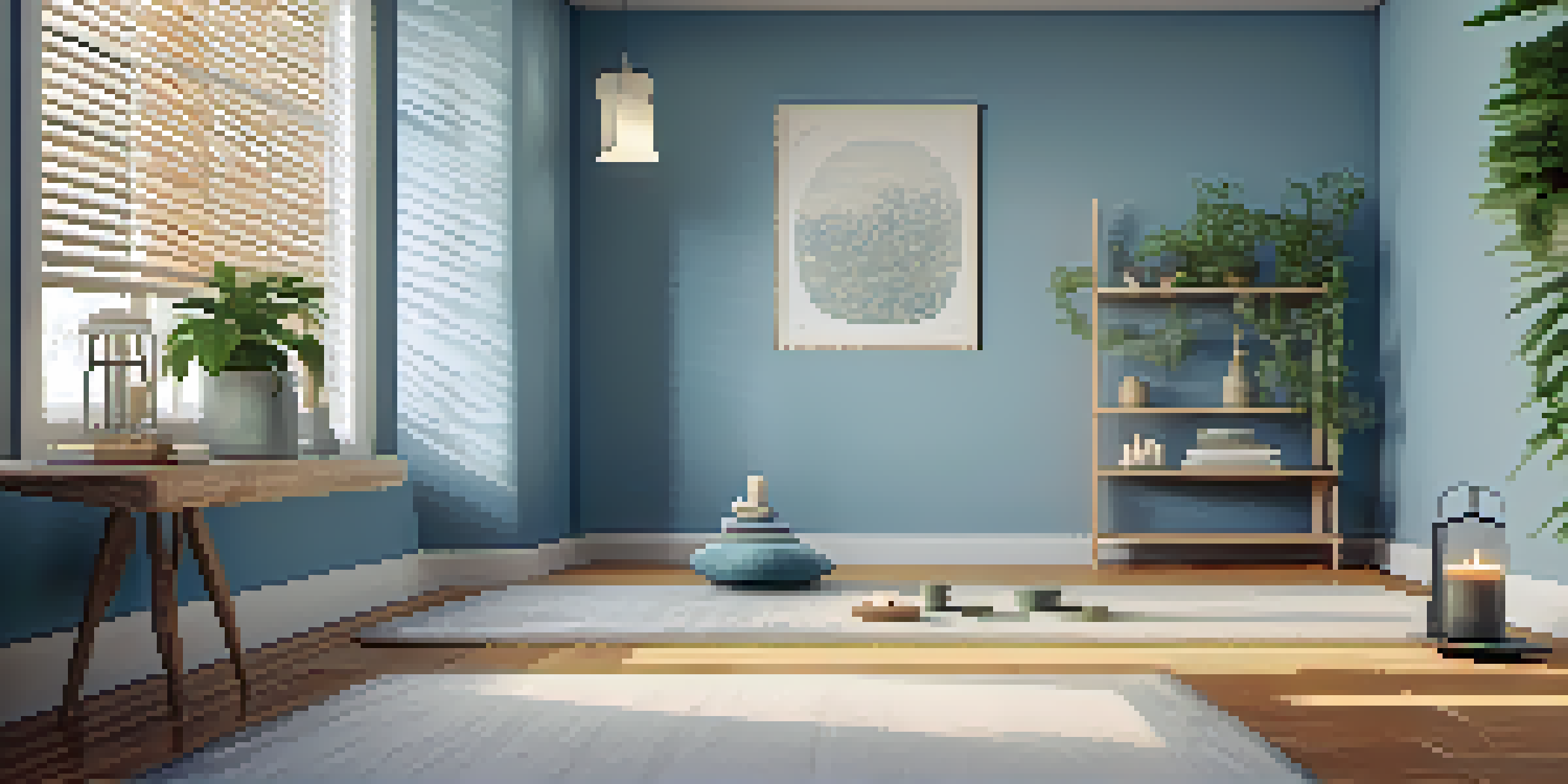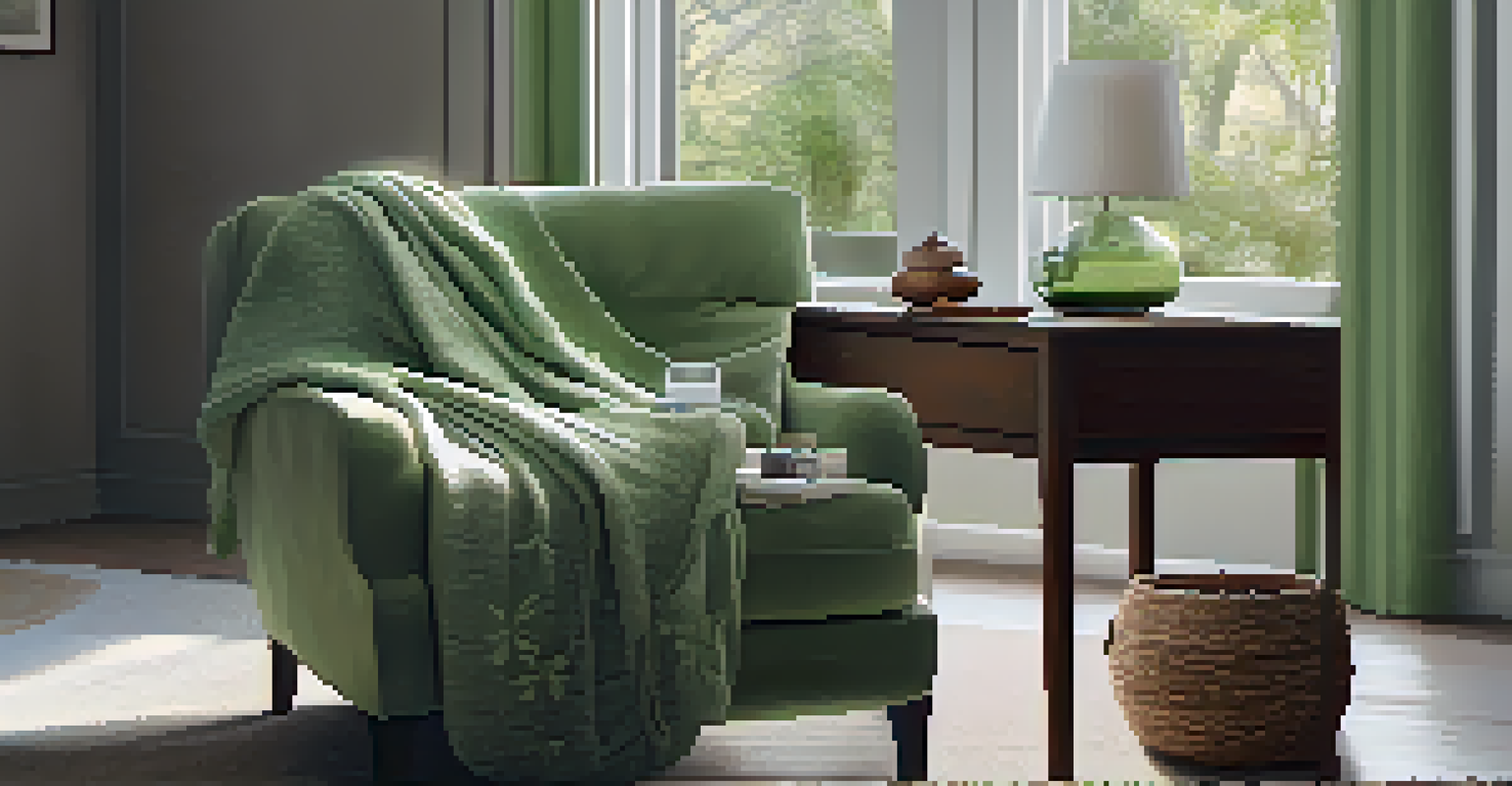Creating a Mindful Space for Yoga and Meditation Practice

Understanding the Importance of a Mindful Space
Creating a mindful space is essential for yoga and meditation practices. This environment helps to cultivate focus and tranquility, allowing you to connect deeper with your inner self. A well-thought-out space can significantly enhance your overall experience and effectiveness during practice.
The mind is everything. What you think you become.
Think of your space as a sanctuary, free from distractions and negativity. Just as a cozy nook can make reading more enjoyable, a mindful space can transform your yoga and meditation sessions. It sets the tone for your practice, helping you to transition from the chaos of the outside world into a peaceful mindset.
In essence, having a dedicated area for mindfulness practices signals your brain that it's time to relax and center. This intentionality allows you to establish a routine, making it easier to dive into your practice each day.
Choosing the Right Location for Your Space
Selecting the right location is the first step in creating your mindful space. Ideally, you want a quiet area in your home that feels inviting and peaceful. Consider a spot with natural light, as sunlight can uplift your mood and energy levels.

If possible, choose a space away from high-traffic areas to minimize distractions. For example, a corner of your bedroom or a dedicated room can work wonders. If space is limited, even a small nook can be transformed with the right elements to create an inviting atmosphere.
Create a Mindful Sanctuary
A dedicated space for yoga and meditation fosters focus and tranquility, enhancing your overall practice.
Ultimately, the location should resonate with you personally, making it a place where you feel comfortable and calm. Remember, this is your sacred space, so trust your instincts when choosing the perfect spot.
Decluttering: Making Room for Mindfulness
Decluttering is an essential part of forming a mindful space. A clean, organized area allows your mind to relax and focus, free from visual distractions. Consider removing items that don’t serve your practice or that evoke stress.
Nature does not hurry, yet everything is accomplished.
You might find it helpful to keep only the essentials in your space, such as a yoga mat, meditation cushion, or a few candles. Decluttering not only makes the area more visually appealing but also creates a sense of openness that is conducive to mindfulness.
As you clear away the clutter, think of it as creating physical space for mental clarity. A minimalist approach can often lead to a more profound practice and a deeper connection with yourself.
Incorporating Natural Elements Into Your Space
Nature has a remarkable ability to calm the mind and inspire tranquility. Incorporating natural elements, like plants or stones, can enhance the peaceful vibe of your mindful space. Plants not only purify the air but also bring a touch of life to your practice area.
You might consider adding a small indoor plant or a bowl of stones that remind you of nature. These elements can serve as focal points during your practice, helping you ground yourself in the present moment.
Incorporate Natural Elements
Adding plants and natural materials can promote a calming atmosphere, grounding you in the present moment.
Additionally, natural materials like wood or bamboo can create a warm and inviting atmosphere. By blending the outdoors into your space, you further promote a sense of peace and mindfulness.
Choosing Colors and Textures That Inspire Calm
The colors and textures in your mindful space play a significant role in setting the mood. Soft, muted tones like blues, greens, and earth tones can promote relaxation and serenity. Alternatively, using textured fabrics, such as soft cushions or blankets, can add warmth and comfort.
When selecting colors, think about how they make you feel. For instance, light blues can evoke a sense of calm, while gentle greens can remind you of nature. You can paint walls in these colors or use them in decor to create a cohesive and calming environment.
Textures also matter; a plush rug can make your space feel cozy and inviting. This tactile experience can enhance your practice, making it not just a visual delight but also a comfortable retreat.
Adding Personal Touches for Connection
Personalizing your mindful space can deepen your connection to it. Consider adding items that hold special meaning, such as photographs, mementos from travels, or meaningful quotes. These personal touches can inspire and motivate you during your practice.
For example, a small altar with meaningful objects can serve as a focal point for meditation. Each item can remind you of your intentions, creating a space that feels uniquely yours and fosters mindfulness.
Personalize Your Practice Area
Infusing your space with meaningful items deepens your connection to it, making your mindfulness journey more significant.
Ultimately, personalizing your space allows it to reflect your journey and aspirations. This connection can make your practice feel more significant and transformative.
Creating a Routine to Enhance Your Practice
Establishing a routine is key to maximizing the benefits of your mindful space. Set aside specific times for yoga and meditation, treating these appointments as sacred. Consistency helps your mind associate your space with peace and relaxation.
Consider starting and ending each session with a few moments of silence or breathwork. This practice can help ground you and signal the beginning and end of your time in this special space. Over time, your brain will learn to shift into a more mindful state as you enter.

Remember, routines don’t have to be rigid. Feel free to adjust them according to your needs, but maintaining a semblance of structure can enhance your overall experience and commitment to mindfulness.